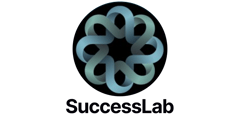Most SaaS companies still run onboarding like a services project: kickoff calls, forms, spreadsheets, long configuration cycles, and the dreaded "we'll go live in 60–90 days." Meanwhile, marketing and product teams rush shiny new AI features to market—only to watch adoption stall because customers can't reach value fast enough.
Fix onboarding first.
If your product doesn't deliver value quickly and predictably, every AI add-on sits on top of a leaky bucket.
What Is AI-Enabled Onboarding?
AI-enabled onboarding uses agentic AI and automation to plan, configure, deploy, and activate your product for each customer—quickly, consistently, and with minimal services overhead. Think of it as a virtual implementation team that:
- Ingests discovery data (call notes, RFPs, CSVs, org charts, contracts)
- Generates recommended configurations (data model, roles, workflows, integrations)
- Automates setup tasks (connecting systems, seeding sample data, creating dashboards)
- Guides end users in-product (contextual walkthroughs, personalized checklists)
- Monitors adoption & outcomes, then nudges (or executes) corrective actions
- Escalates to humans only (exceptions, approvals, high-impact design choices) — cross-cutting safety net
- Productizes professional services tribal knowledge into executable, machine-readable playbooks — continuous improvement loop feeding all steps above
This isn't a chatbot bolted to your documentation. It is a policy-aware system of action that reads the context, designs the config, does the setup (safely), and closes the loop — often shrinking TTV from weeks to days or hours when deployed with RBAC, audit trails, and human-in-the-loop reviews.
Why Prioritize It Before AI Add-Ons?
1) Time-to-Value is the real blocker
If customers don't hit value fast, they stall or churn—regardless of how impressive your AI roadmap looks. AI onboarding compresses activation so your downstream AI features get clean data, trained users, and real usage patterns to learn from.
2) It compounds every revenue metric:
- Higher activation & adoption → better GRR/NRR
- Lower services cost per deal → better gross margins
- Faster implementation → shorter CAC payback & sales cycles
- Predictable, repeatable outcomes → scalable land & expand
3) It frees humans to deliver strategic value
Your Professional Services and Customer Success teams stop doing low-value "click ops" and start focusing on process redesign, change management, and expansion strategy—the work that actually moves NRR.
4) It becomes your learning loop
Every onboarding engagement produces labeled data: where customers stall, which configurations work, and what nudges convert. This feedback loop trains your models and creates a defensible competitive moat.
The Strategic Payoff
AI-enabled onboarding is the force multiplier for everything else you want to do with AI:
- It unlocks clean, structured context for your copilots and agents
- It standardizes outcomes, so your models actually learn what "good" looks like
- It compounds value: every onboarded customer sharpens your playbook and your models
Don't bolt AI features onto a product that customers struggle to adopt.
Fix Time-to-Value first — with AI that deploys, configures, and teaches your product automatically.
Once you do, every other AI investment lands harder, faster, and with undeniable ROI.
Question for you: What’s your biggest onboarding friction point right now—data migration, configuration complexity, or user adoption? And if you’ve already streamlined onboarding, what AI capabilities are you building on that foundation? Comment below or DM me to discuss further.
In my next article in the series, I'll dive into the technical architecture behind AI-enabled onboarding systems — including the key components, integration patterns, what capabilities are available now, are near (3-9 months) or next (12+ months), and how to choose between build, buy, or hybrid.



